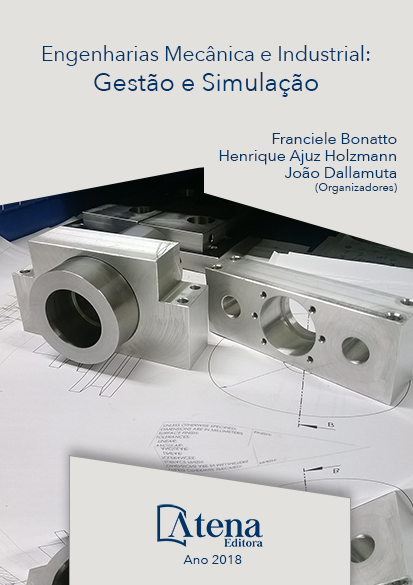
ANÁLISE DA RESISTÊNCIA À FADIGA DE UM TRANSPORTADOR DE LÂMINAS DE CLÍNQUER
No presente trabalho um transportador de lâmina de clínquer foi analisado para verificar se a alteração no projeto feita pela aplicação de uma chapa de reforço para aumentar a resistência à fadiga junto ao mancal do eixo dos carrinhos será efetiva para eliminar a ocorrência de falhas futuras. A análise consistiu na confecção do modelo em 3D, verificação de deformações por extensometria, calibração do modelo 3D com o resultado da extensometria e verificação das tensões atuantes em decorrência de todos os esforços aplicados no carrinho. Foram analisadas diferentes condições de operação, com variação no ângulo de inclinação do equipamento (0°, 30° e 45°) e na capacidade de carga (60% e 100%). Os resultados demonstraram que a tensão atuante máxima no reforço é de 140 MPa. Verificou-se também, que a aplicação de 60% da capacidade máxima pode evitar a ocorrência de falhas por fadiga. No entanto, a resistência a fadiga pode ser reduzida ainda mais por fatores tais como defeitos metalúrgicos e dimensionais da solda, além de sobrecargas imprevistas no modelo.
ANÁLISE DA RESISTÊNCIA À FADIGA DE UM TRANSPORTADOR DE LÂMINAS DE CLÍNQUER
-
DOI: Atena
-
Palavras-chave: Fadiga, Transportador, Simulação Computacional, Extensômeros.
-
Keywords: Fatigue, Conveyor, Computer Simulation, Strain Gauges.
-
Abstract:
In this paper, a clinker conveyor was analyzed to verify if a change in the design made by the application of a reinforcement sheet to increase the fatigue strength next to the carts shaft bearing will be effective to eliminate the event of future failures. The analysis consisted of the preparation of a model 3D, verification of the strain using strain gauges, calibration of the 3D model and verification of the stress acting because of the entire load applied to the carts. Different operating conditions were analyzed with variation in the inclination angle of the equipment (0°, 30° e 45°) and in load capacity (60% e 100%). The results showed that the maximum stress in the reinforcement is 140 MPa. It also verified that the application of 60% of the maximum capacity could avoid the occurrence of failures. However, fatigue strength can be further reduced by factors such as metallurgical and dimensional weld defects, as well as unforeseen overloads in the model.
-
Número de páginas: 15
- Raphael Calazans Cardoso


